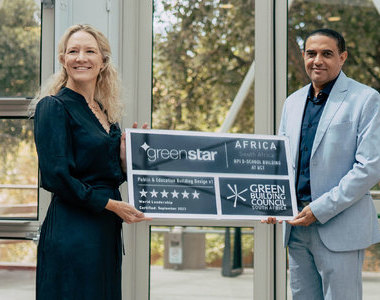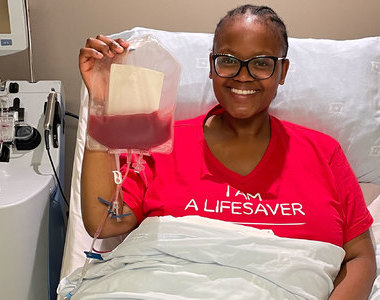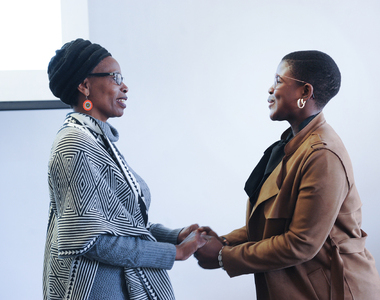Earth Day: Farming sea urchins using integrated multi-trophic aquaculture
22 April 2021 | Story Helen Swingler. Voice Neliswa Sosibo. Read time 8 min.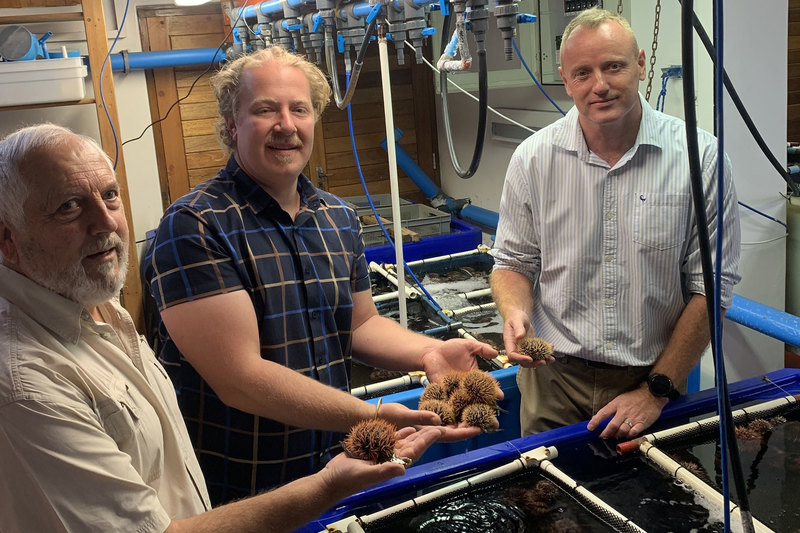
A team of three University of Cape Town (UCT)-affiliated researchers are part of a project to develop sea urchin (Tripneustes gratilla) farming, or echinoculture, using integrated multi-trophic aquaculture and taking it from the research phase to the marketplace.
Integrated multi-trophic aquaculture (IMTA) is central to the farming process. IMTA is an example of agroecology: the use of ecological principles to make food production more sustainable, said UCT senior research scholar Emeritus Professor John Bolton. “It links commercial species at different levels of the food chain, taking waste from one species to feed another.”
Emeritus Professor Bolton is one of three researchers involved in the project, working alongside honorary UCT research associates Dr Mark Cyrus and Dr Brett Macey of the national Department of Forestry, Fisheries and the Environment (DFFE).
Until now, South Africa’s aquaculture industry has been dominated by abalone, often farmed using IMTA, and other high-value species such as mussels, oysters and trout. Echinoculture offers new possibilities.
The high-value species grown on aquafarms attract large amounts of foreign income; South Africa exports mainly to the Asian market. In 2018 the country’s abalone subsector contributed 35.9% (1 522.2 tons) of the country’s total aquaculture production (6 365.8 tons, excluding seaweeds), said Dr Macey.
The project will build on previous sea urchin aquaculture research by Dr Cyrus and the team that has successfully developed innovative hatchery and grow-out technologies, said Bolton. The IMTA process will be adapted to maximise sea urchin farming conditions.
Surge in demand
The popularity of these spiny animals, particularly their roe (“uni”, often eaten as sashimi) has catapulted in recent years. Japan consumes 80% of the world’s lucrative sea urchin production. As demand for sea urchins grows, so too does pressure on wild harvesting. For this reason, the team is hoping the successes of abalone can be replicated with another high-value species: ‘crops’ of sea urchins, specifically collector sea urchins, grown from larvae.
A pilot system is being built at Viking Aquaculture’s Buffeljags Abalone Farm, where abalone is farmed using IMTA, and incorporating Ulva rigida (sea lettuce) in the process. While successful commercial IMTA is very new in Europe, the process has been commercially successful on South African aquafarms for almost two decades.
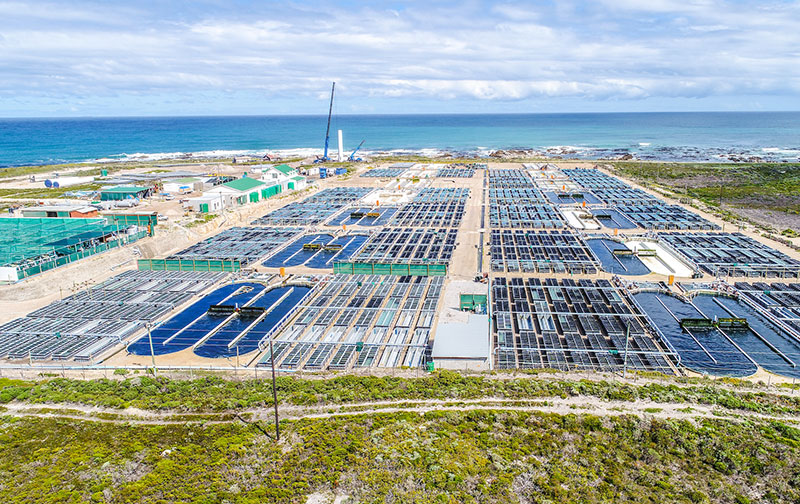
The IMTA research at Buffeljags is part of a far larger initiative involving a multi-laboratory project, All Atlantic Ocean Sustainable, Profitable and Resilient Aquaculture (ASTRAL), a European Union Horizon 2020-funded project that focuses on IMTA farming. ASTRAL aims to develop sustainable value chains for aquaculture across the Atlantic area. Other laboratories have been established in the United Kingdom, Ireland and South America. The project will run until 2024.
Complementary research
The South African IMTA laboratory is run by the UCT/DFFE partnership of Bolton, Cyrus and Macey, along with Viking Aquaculture, a partner in ASTRAL.
“Some tasks are carried out at the Marine Research Aquarium in Sea Point, and commercial-scale studies are carried out at the aquafarm at Buffeljags,” said Bolton.
Their partnership combines complementary research fields. Bolton is a seaweed biologist and an expert on the integrated aquaculture of Ulva on commercial abalone farms. In the early 2000s he was the South African partner on two SA/Sweden projects exploring this type of aquaculture.
Macey is a molecular biologist with an interest in the role of microorganisms in the health of aquatic organisms and their environment, and the DFFE co-leader of the South African IMTA laboratory. He is responsible for monitoring the microbial communities of the IMTA systems to provide information on biosecurity.
Cyrus is an aquaculture researcher and larval biologist, and a control scientist technician at the DFFE. His research looks to improve production technologies and to develop feeds and feed additives (probiotic and seaweed-supplemented diets) as well as IMTA technology for farmed aquatic animals, especially sea urchins.
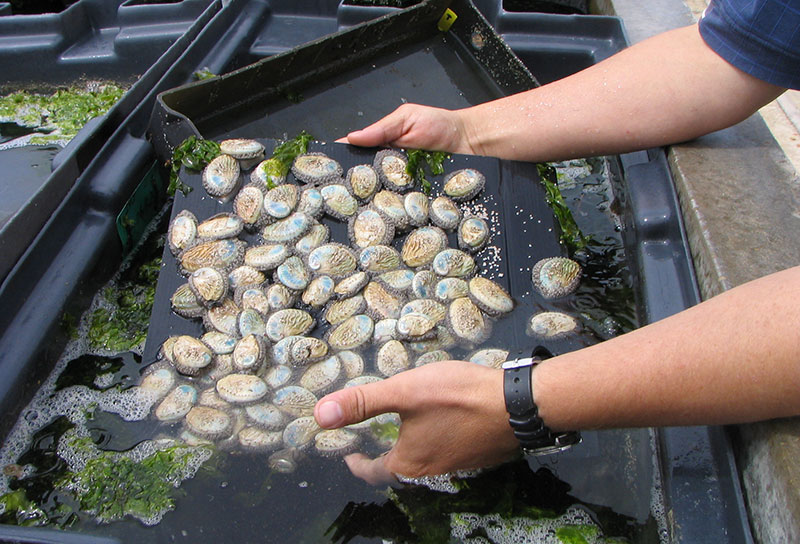
Sustainable farmed seafood
The sustainability element of IMTA is paramount in developing farmed seafood resources, said Bolton. The United Nations estimates that the world’s population will grow to 9.7 billion by 2050.
“If we are to feed people in 2050, we will have to produce more food from the oceans.”
“If we are to feed people in 2050, we will have to produce more food from the oceans, which make up more than 70% of Earth’s surface,” Bolton added. “Low-trophic species are critical to this, especially seaweed, as is a move towards zero waste, by treating waste as a resource to be used to grow other things.”
The cultivation of seaweeds will also play a critical role in carbon capture in future marine food production.
“The potential benefits with large-scale seaweed aquaculture include improved water quality, carbon sequestration and reduced ocean acidification – all relevant to major global ocean anthropogenic changes,” he said.
Training students, growing jobs
The development is a vehicle to train postgraduates in this key area of sustainable seafood. It also has job development potential in communities ravaged by abalone poaching and gang wars over control of the lucrative illegal trade in these molluscs.
Aquaculture may play a role in changing this.
“The farms could mitigate the effects of rising [poaching] incidents, through creating alternative sustainable livelihoods for coastal communities,” said Macey.
According to the most recent DFFE statistics, the aquaculture sector employed 3 486 people on farms in 2018, with the abalone subsector creating more employment opportunities than the others, employing some 1 524 people.
“Many are from coastal communities that previously relied on wild fisheries,” said Macey.
“Currently there are also seeding initiatives to restock areas of the coast with abalone (abalone ranching) – which will also provide alternative livelihoods.”
Cyrus added, “Currently there are also seeding initiatives to restock areas of the coast with abalone (abalone ranching) – which will also provide alternative livelihoods for those who may have poached, and provide an incentive to protect the abalone in their areas of harvest while they grow to market size.”
Possibilities for graduates also abound in aquaculture. The facilities need higher levels of management – for example, hatchery managers are generally university trained, said Bolton.
“We have a number of postgraduates linked to the ASTRAL project, which specifies that we train a number of ‘apprentices’. The project recently appointed postdoctoral research fellow Dr Marissa Brink-Hull, who was recently accepted as an All-Atlantic Youth Ambassador in their most recent cohort.
This initiative is part of the All-Atlantic Ocean Research Alliance (AANCHOR) project. They are also training other postgraduates who are part of the ASTRAL project.
“We’ll also run several training courses and participatory workshops on IMTA as part of ASTRAL,” said Bolton.
Note: On 28 April, Bolton will participate in a UN Dialogue on “Powering the seaweed revolution for transformational change in our food system”.
 This work is licensed under a Creative Commons Attribution-NoDerivatives 4.0 International License.
This work is licensed under a Creative Commons Attribution-NoDerivatives 4.0 International License.
Please view the republishing articles page for more information.
Listen to the news
The stories in this selection include an audio recording for your listening convenience.

























































